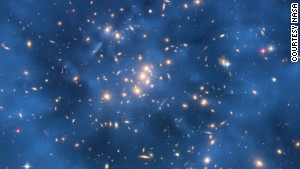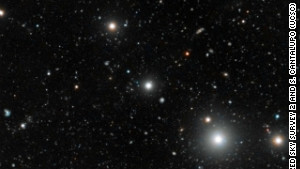
The sentient abilities of plants fascinate Monica GaglianoFrances Andrijich/andrijich.com.au
We’re barking up the wrong tree if we think plants have no higher sentience, says researcher Monica Gagliano – they just don’t show it like we do.
By Joshua Howgego
MONICA GAGLIANO was diving on Australia’s Great Barrier Reef one day in 2008 when she had an epiphany. She was carrying out ecological experiments on reef fish that required her to kill them afterwards to harvest tissue samples. The fish had been swimming in and out of her hands for weeks. But that day they seemed to be hiding – almost as if they knew.
It was the moment at which Gagliano decided not only never to kill another animal for scientific purposes, but also to devote her research time to the sentience of other life forms. That led her to plants. Since no models existed for studying their behaviour, she applied her existing knowledge. “I looked at them as if they were my animals,” says Gagliano, who is due to take up a post at the University of Sydney this year. The approach has revealed that plants have a surprising range of abilities – and Gagliano is convinced she will discover more.
People often think plants don’t do much. Are they wrong?
The main reason we don’t appreciate them is that they operate at a different pace. It isn’t just a slower pace. Some plants are too fast for us, like the ones that explode to fire out their seeds. Plants also have a different way of manoeuvring in the environment. Animals move from A to B, but plants grow from A to B. They need to detect as much as possible beforehand to avoid growing in the wrong place, so they have very fine-tuned senses. The more we have looked, the more we have realised that they have a suite of behaviours.
What kinds of abilities do they have?
One that might come as a surprise is their acoustic abilities. Plenty of organisms have mechanoreceptors that respond to mechanical forces, and we now know plants have one that can pick up vibrations. Some can even “hear” the vibrations of a caterpillar munching their leaves and strike back by emitting repellent chemicals.
You say plants can learn. Why do you think that?
My idea was to take something that plants might consider a threat and see whether they could learn not to bother about it. Mimosa was a good plant to use because it quickly folds up its leaves when it feels threatened. I created a set-up that allowed me to drop a mimosa from about 15 centimetres high. It sounds terrible! But it actually wasn’t. I put it in a pot and it would slide down a bar onto some foam.
The first couple of times, the plant was like, “What’s happening?” It closed up its leaves. Usually with animals we need to do lots of repetitions before they learn what’s going on. So I was quite surprised that some of my plants started reopening their leaves after two to six drops.
How did other researchers react when you said that plants are good learners?
Plant biologists told me that I’m using the wrong words. But “learning” is exactly what I mean. Whether it is an animal, a plant or bacteria, if it ticks the boxes that we agree define learning, then that is what it is doing.
Does this go beyond the most basic learning?
The next level up is Pavlovian learning. In the famous example of Pavlov’s dogs, the dog learns that the bell always comes before dinner. I tried it with pea plants. The plant’s “dinner” was light and the “bell” was a little fan. I tested the fan first and the plant couldn’t care less about it. It was a meaningless cue, just as the bell was for the dog.
I put the peas in Y-shaped chambers that, once the plants have grown to a certain height, forced them to grow either left or right. I let the fan blow down one arm of the chamber then followed it with light. I did the same for two more days, each day changing the side the fan and light came from.
On the fourth day, I turned on the fan, but not the light. The instinctual response would be for the plant to grow towards the side where light was the day before; plants are good at remembering where they saw light. But would it learn to go against its instinct and follow the fan, which is a precursor of where the light is going to be? That is exactly what the peas did.
How could you tell that plants weren’t just choosing randomly which way to go?
Around 60 per cent of the peas grew towards the fan on the fourth day. That might appear not much more than random, but normally plants always go towards where they saw light last – not just sometimes, 100 per cent of the time. So, if 60 per cent go the other way, that is a high proportion.
You used the word “remember”. Are you saying plants have memories?
Memory is intrinsic to learning. And by the way, the pea wasn’t the first to show that plants have memory. In the mimosa drop experiment, I left my plants for almost a month and then went back to repeat the experiment. The plants responded exactly as if the last drop had been 5 minutes before.
If plants have memories, where are they stored?
The neat thing about plants, and the thing that makes them challenging for us to understand, is that they are totally decentralised. That means memories won’t be in a specific place like the leaves or the roots. The plant functions as a total brain, if we want to put it that way.
Our memories are stored in the brain, in patterns of electrochemical activity. Plants are masters of electrochemical signalling. A lot of electricity and a lot of chemical signals are running through plants. They have the same kind of channels that power our own cells’ electrical signalling and very similar chemicals are involved.
“Plant memories are decentralised – the whole plant is a total brain”
Could we ever see such signals?
If this were an animal, we would challenge it with a task and monitor what is occurring at the electrochemical level. We can plug a human into a machine and see how brain activity changes when they view happy or sad pictures, for example. I am planning to try something similar in plants soon.
Why have we been so slow to appreciate plant abilities?
We assume that humans are the golden template: anything that operates as we do gets a big tick. But that assumption is proving quite bad for the environment. It is also a hypothesis that doesn’t hold because the evidence is showing that the brain isn’t the only thing to produce learning. Plants are revealing that.
This article appeared in print under the headline “The plant whisperer”













Recent Comments